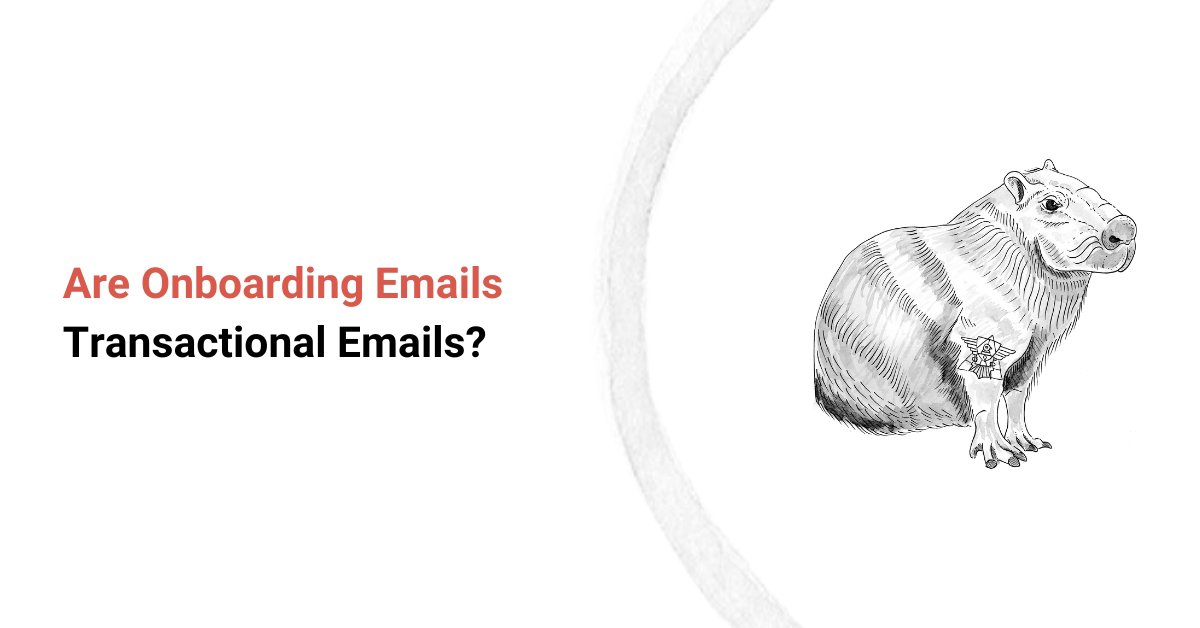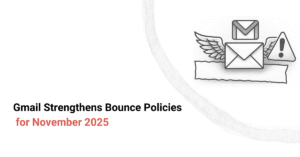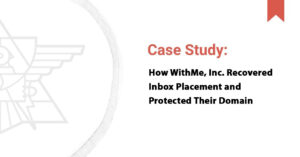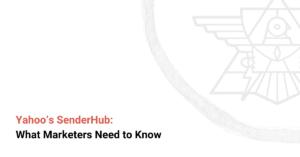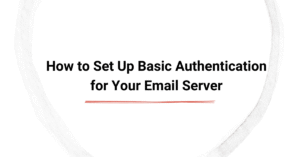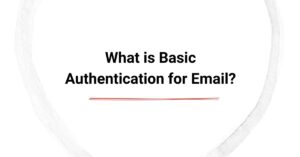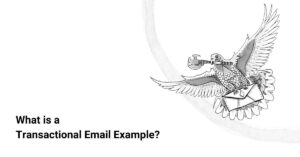Are onboarding emails transactional emails, or do they deserve a category of their own? While onboarding emails share some traits with transactional emails, such as being triggered by user actions, they go beyond notification to educate users on product usage.
Onboarding email sequences nurture users, starting with welcome messages and gradually introducing complex features. They guide them to their "aha moment", where they understand the product's value and take action. But there's still a debate on how to categorize them. Are they transactional, since they're triggered by user actions, or are they marketing emails, since they aim to build engagement and loyalty?
In the next sections, we'll break down the key differences, use cases, and compliance considerations to help you decide where onboarding emails belong in your SaaS email strategy.
Main Points’ Summary:
- Onboarding emails help users understand and engage with a product/service after signup.
- They can be transactional if they are triggered by user actions and provide essential account details.
- If they contain promotional content, they are considered marketing emails and require opt-in consent.
- Best practices include personalization, automation, and compliance with email regulations.
What are Onboarding Emails?
Onboarding emails are a series of automated messages sent to new customers after they sign up for a service, join a platform, or purchase a product. These emails help new users get started with a product or service by guiding them through features and setup. As a result, onboarding emails:
- Drive engagement or product adoption by encouraging initial actions such as setting up a profile and adding payment info;
- Improve customer success by providing useful information and support;
- Increase retention rates by reducing churn and encouraging loyalty.
Are Onboarding Emails Considered Transactional?
Onboarding emails can be either transactional or marketing messages, depending on their content and purpose. Knowing the difference comes in handy, especially when you want to comply with email regulations and develop effective customer engagement strategies. Below is an overview of transactional vs marketing emails to help you out.
What Defines a Transactional Email?
Transactional emails are automated messages sent to customers in response to their actions. As such, the user expects to see the message in their inbox instantly. The common types of transactional emails include account notification emails, reminder emails, user-requested emails, periodic update emails, receipts and invoice emails, support and feedback emails, referrals and invites.
These emails enhance a user's experience by providing essential information to facilitate a specific transaction or interaction, such as order confirmation details. You can tell it's a transactional email by the following characteristics:
- No marketing intent: They provide the necessary information rather than promoting products.
- Triggered by user actions: Sent in response to specific interactions, such as account creation or subscription confirmation.
- Sent to individuals: Not sent to mass lists. Instead, they are personalized and relevant to the recipient's actions.
- Exempt from marketing regulations: Generally, transactional emails aren't subject to the same anti-spam laws as marketing emails, such as GDPR and CAN-SPAM.
When are Onboarding Emails Considered Transactional?
Onboarding emails can be classified as transactional when they meet the following criteria:
- Triggered by user actions, such as account creation, subscription confirmation, or password reset;
- Providing necessary information to access or use the service, such as setup instructions, access details, or welcome messages.
Examples of transactional onboarding emails include:
- "Confirm Your Email to Activate Your Account"
- "Your Account is Ready – Here’s Your First Step"
- "Complete Your Profile to Get the Best Experience"
When are Onboarding Emails Considered Marketing Emails?
On the other hand, onboarding emails can fall under the marketing category when they contain product promotions or sales offers, unsolicited upsells or referrals, and links to unrelated content, such as blog posts, social media promotions, or webinars.
Such emails enhance customer engagement and encourage further purchases but are subject to marketing email regulations. Since they contain promotional messaging and not time-sensitive details like a password reset link, the delivery speed doesn't count much. They are also sent to multiple recipients at once.
Here are some examples of marketing onboarding emails:
- “Check Out Our Premium Plan for More Features”
- “Invite a Friend and Get 10% Off”
- “Exclusive Webinar: Learn Advanced Tips”
Differences Between Transactional and Marketing Onboarding Emails
| Feature | Transactional Onboarding Emails | Marketing Onboarding Emails |
|---|---|---|
| Purpose | Provides necessary info for using a service | Encourages engagement, upgrades, or referrals |
| Triggered by | User action (account creation, subscription) | Marketing automation sequence |
| Opt-in Required? | No, as it’s service-related | Yes, per GDPR & CAN-SPAM laws |
| Compliance | Doesn’t require an unsubscribe option | Must include an unsubscribe link |
Examples of Effective Onboarding Transactional Emails
Transactional onboarding emails promote user activation, engagement, and satisfaction while ensuring compliance with email regulations. Let's examine a few effective examples of transactional emails.
1. Account Activation Email
Account activation emails remind users to complete the signup process by verifying their email address or activating their account. “Activate Your [Company Name] Account Now” is a good subject line example.
Such transactional messages should include:
- A clear confirmation link to activate the account;
- Instructions on the next steps to take;
- Support contact information for any issues.
2. Welcome Email with First Steps
Welcome emails guide users on how to start using the product and provide a clear next step. They make users feel comfortable and confident in using your product or service. Such an email may have the subject line "Welcome to [Product Name] – Here’s What to Do Next".
The message of an effective transactional welcome email should include:
- A simple walkthrough or a link to a getting started guide;
- A personalized greeting with the user's name;
- A clear call to action, such as "Set Up Your Profile".
3. Profile Completion Reminder
The last type of transactional onboarding email is the profile completion reminder, which encourages users to finish setting up their account and complete their profile. A possible subject line might be "Your Profile is 80% Complete – Finish It Now".
These types of emails should include:
- Personalization with the user's progress such as percentage complete;
- A clear call to action to complete the missing details;
- Benefits of completing the profile like improved user experience.
Best Practices for Writing Onboarding Transactional Emails
Keep the Content Simple and Action-Oriented
Keep your emails concise and to the point. This way, users can understand what to do within seconds of opening the email. This might mean avoiding clutter and focusing on a single CTA that drives the user towards the next step. As a result, you'll increase the likelihood of users completing the onboarding process and reduce friction.
Use Personalization to Increase Engagement
Even though you're using email automation, it shouldn't be obvious to the customer. Personalization makes emails feel more human and less automated. Address users by their first name and include customized recommendations based on their behavior or preferences. This will create a sense of familiarity, build trust, and increase engagement.
Optimize for Mobile Responsiveness
You must make your emails mobile-friendly because over half of users open them on mobile devices. This involves the use of responsive layouts and clear typography. It will improve the user experience and increase the chances of users completing the onboarding process on the go.
Avoid Too Much Promotional Content
As highlighted earlier, onboarding transactional emails should facilitate the onboarding process, not sell. If an email feels like an ad, it may be flagged as marketing, which can lead to deliverability issues.
Therefore, keep promotional language to a minimum and aim to provide value to the user. For instance, there's no need for promotional content in a password reset email if you want to give subscribers a smooth onboarding experience.
Ensure Compliance with Email Regulations
Based on GDPR and CAN-SPAM regulations, transactional emails don’t require an unsubscribe link, but marketing onboarding emails must include an opt-out option. Always comply with such regulations to maintain a positive sender reputation, avoid legal issues, and build trust with your users.
Use Separate Tools for Optimal Performance
To ensure optimal performance, consider using separate servers for transactional and marketing emails to improve deliverability and maintain clear distinctions between the two. That might mean selecting a transactional email service capable of isolating such messages from others.
Using different providers for marketing and transactional emails improves deliverability, speed, and personalization. Shared IP addresses can lead to lower domain reputations and delayed delivery. Using separate tools will also help to maintain compliance with legislation like GDPR and avoid mistakes that could lead to fines.
Common Mistakes to Avoid in Onboarding Emails
Making Emails Too Long or Complicated
Most users don't read lengthy emails. So, break up the content into short paragraphs, use bullet points, and include clear CTAs that guide the user towards the next step. That's how you increase the likelihood of users engaging with your email and completing the onboarding process.
Sending Too Many Emails at Once
Don't make the mistake of bombarding new users with multiple emails per day. It can cause disengagement and frustration on their part. Instead, space out your emails over several days or weeks so they can digest the information and take action at their own pace.
Using “No-Reply” Email Addresses
Avoid using "no-reply" email addresses, as this prevents users from asking questions or responding to your emails. Instead, use a monitored inbox (such as support@company.com) that allows users to reach out and receive timely support. This will help build trust and ensure that users receive the help they need to successfully onboard.
Make the Most Out of Onboarding Emails and Turn New Users to Loyal Customers
If you want to improve user activation, reduce churn, or drive revenue growth, a well-crafted onboarding email strategy can make all the difference. Onboarding emails can be classified as transactional if they provide functional value, like informing customers of account security or status and are triggered by user actions, such as account activation or profile setup.
However, if they contain promotional content, they fall under marketing email regulations, requiring compliance with laws like GDPR and CAN-SPAM. Some of the best practices for effective onboarding strategies include personalization, clear CTAs, and adherence to email laws. They create a seamless and engaging user experience.
Do you need assistance in optimizing your onboarding email strategy? You are welcome to contact us for a free email audit today!

